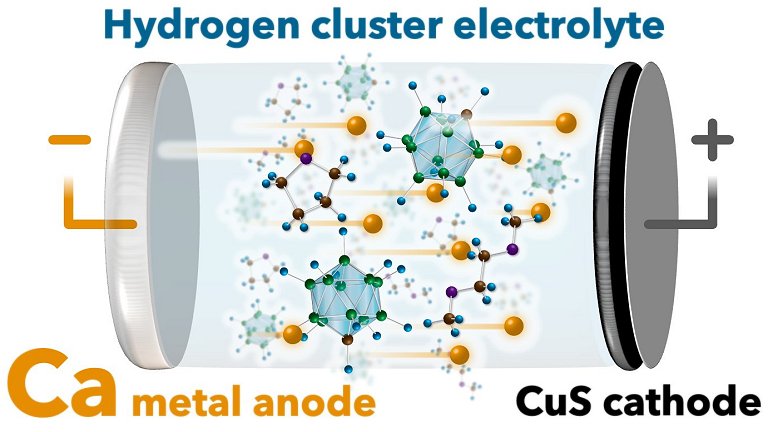
Calcium battery
Calcium battery – Japanese researchers have introduced the first calcium ion battery to achieve levels of efficiency and durability that make it viable for commercialization.
In addition to calcium being much more abundant and cheaper than lithium, a calcium ion battery can exceed 2,000 mAh/cm-3, versus less than 800 mAh/cm–3 for lithium–ion batteries.
Its properties also help speed up ion transport and diffusion in electrolytes and cathode materials, giving it an advantage over other alternatives such as magnesium and zinc–based batteries.
But there were still practical challenges to be overcome so that these theoretical gains could be obtained, especially in terms of finding an efficient electrolyte and a cathode with the capacity to store calcium ions (Ca2+) in sufficient quantity.
Kazuaki Kisu and his colleagues at Tohoku University in Japan were able to score very important points in these two categories.
The durability of the battery jumped to more than 500 cycles, against a few cycles demonstrated so far.
Competitive cycling
Last year, the team found a solution to the calcium electrolyte (Ca) problem using a hydrogen (monocarborane) cluster, with the added advantage of eliminating fluorine. The electrolyte demonstrated markedly improved electrochemical performances, such as high conductivity and high electrochemical stability.
“For our current research, we tested the long–term operation of a metallic Ca battery with a cathode composed of carbon/copper sulfide nanoparticles (CuS) and a hydride–based electrolyte,” Kisu said.
Also a natural mineral, CuS has electrochemical properties and a layered structure that allows it to store a variety of cations, including lithium, sodium, and magnesium. Its large capacity, 560 mAh/g–1, is two to three times larger than current cathode materials for lithium–ion batteries.
The result is a calcium ion battery with a highly stable cycling performance. The prototype battery maintained 92% capacity retention after 500 cycles of use and recharging, and this based on the capacity of the 10th cycle. Although there is a “magic number“ of 1,000 cycles to make a new battery viable on the market, few lithium batteries marketed today for replacement reach this number.
“Our study confirms the viability of Ca metal anodes for long–term operations and we hope the results will accelerate the development of Ca metal batteries,” Kisu said.






















